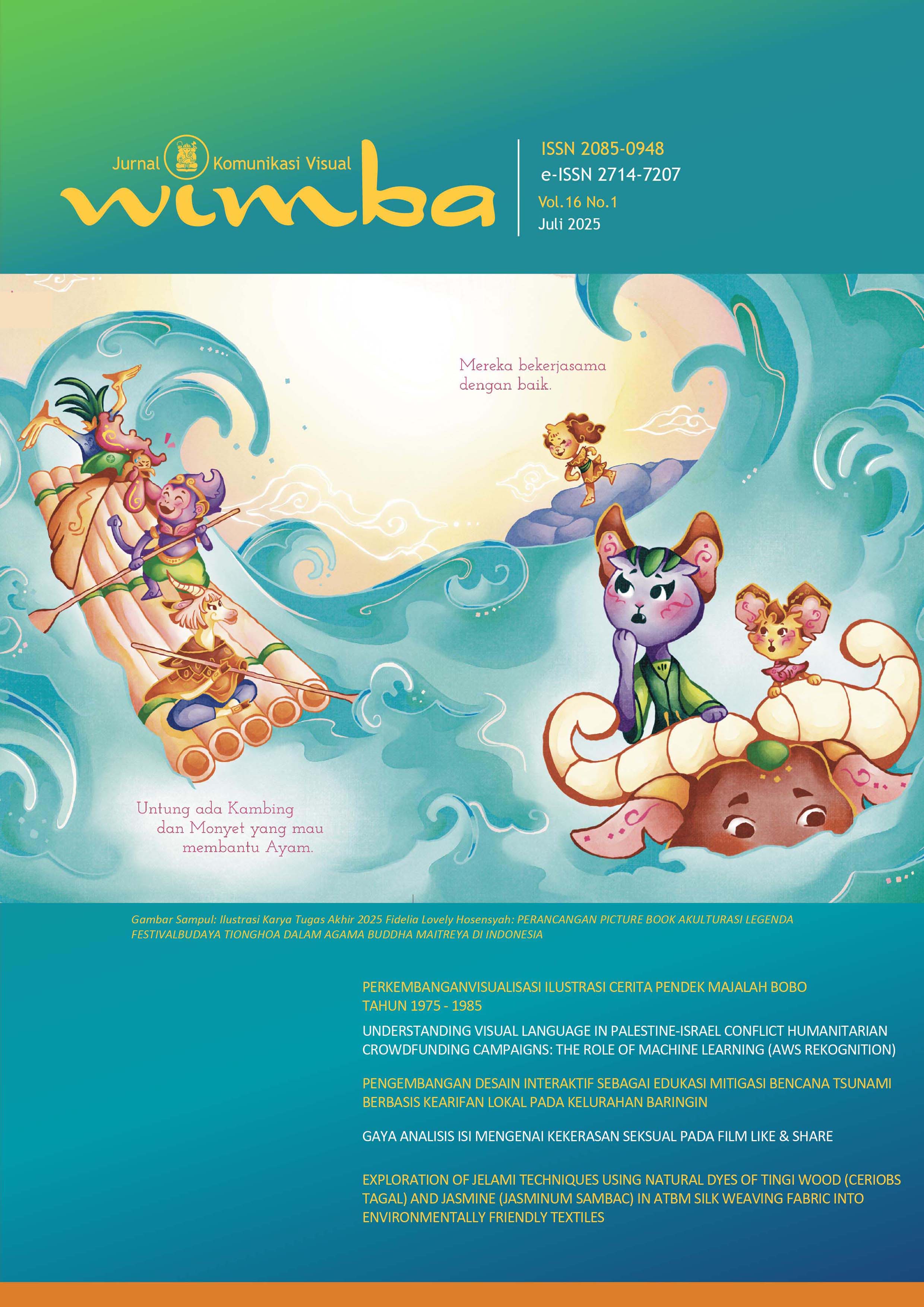EXPLORATION OF JELAMI TECHNIQUES USING NATURAL DYES OF TINGI WOOD (CERIOPS TAGAL) AND JASMINE (JASMINUM SAMBAC) IN ATBM SILK WEAVING FABRIC INTO ENVIRONMENTALLY FRIENDLY TEXTILES
DOI:
https://doi.org/10.5614/jkvw.2024.16.1.1Abstract
This paper discusses the results of research related to exploration and innovation in utilizing the potential of nature and environmentally friendly technology in creating textile motifs through the Jelami technique (Natural Footprint), which is a way of transferring traces of motifs and colors on fabric, using jasmine flowers as a motif builder and natural dyes of high wood as a form of color traces. This innovation is related to the rapid progress of Indonesia's textile industry, which is considered positive. Still, there are problems with environmental pollution caused by the increasing use of environmentally unfriendly materials, namely chemicals, which are very harmful to the ecosystem of human life and biodiversity. To address this issue, it is essential to anticipate potential problems by exploring alternatives in the textile industry's production process one alternative is research on the use of environmentally friendly materials. The method used is exploratory qualitative research. The initial stage is observation, literature study, and documentation, then the stage is determining jasmine flowers (Jasminum sambac) and natural dyes from high wood (Ceriobs candolleana) applied to ATBM silk fabrics through the jelami technique. The next stage is to experiment and explore the process of the jelami technique on fabrics to get a standard formulation to produce jasmine motifs that are consistent in shape and color. The stages of applying and designing motifs with jelami techniques use a craft creation approach (Gustami, 2006), namely the design, embodiment, and evaluation stages. Munsell's theory expresses color in three dimensions: taste, value and intensity. The result of the study is the novelty of jasmine motifs with natural dyes of high wood through the process of jelami techniques in the form of textiles to be applied to a variety of used objects that have high economic value and are environmental friendly
Downloads
Published
Issue
Section
License
Copyright (c) 2025 Wimba : Jurnal Komunikasi Visual

This work is licensed under a Creative Commons Attribution-NoDerivatives 4.0 International License.
The Authors submitting a manuscript do so on the understanding that if accepted for publication, copyright of the article shall be assigned to Wimba jurnal Komunikasi Visual and KK Komunikasi Visual & Multimedia Fakultas Seni Rupa dan Desain Institut Teknologi Bandung as the publisher of the journal. Copyright encompasses rights to reproduce and deliver the article in all form and media, including reprints, photographs, microfilms, and any other similar reproductions, as well as translations.
Wimba jurnal Komunikasi Visual and KK Komunikasi Visual & Multimedia Fakultas Seni Rupa dan Desain Institut Teknologi Bandung and the Editors make every effort to ensure that no wrong or misleading data, opinions or statements be published in the journal. In any way, the contents of the articles and advertisements published in Wimba jurnal Komunikasi Visual are the sole and exclusive responsibility of their respective authors and advertisers.
Firmanda Satria. M.Ds (Editor-in-Chief)
Editorial Office of Wimba: Jurnal Komunikasi Visual KK Komunikasi Visual & Multimedia Fakultas Seni Rupa dan Desain Institut Teknologi Bandung
Jl. Ganesha 10
BANDUNG 40132
Tel / fax : 0222516567 / 0222516567
Email: jurnalwimba@gmail.com








